David K
Honored Nomad
        
Posts: 64490
Registered: 8-30-2002
Location: San Diego County
Member Is Offline
Mood: Have Baja Fever
|
|
The Colony of San Bruno, California's Oldest Spanish Ruins
NOTE: This was originally posted as part of my May 2019 trip report.
Some writers call San Bruno a mission, but it was more of a colony attempt to gain a foothold in California. It lasted less than two years as poor
water supply, lack of food, and scurvy all were hard to overcome. Kino and Atondo did make a crossing of the peninsula from here making them the first
to reach the Pacific by land.
We first drove as close to the site as possible, did not see a trail through the shrubs and tried to find another access. We all parked on the flat to
the west of the hill. The drone was launched and Jimmy and I looked to find any sign of the fort. Meanwhile, the others hiked to it and found it
first. They found a good trail up from where we first drove to, it was simply hidden to our eyes. I walked directly from the Raptor to the hill and up
to the site. We all returned the way I went and said the trail they took up was easier.
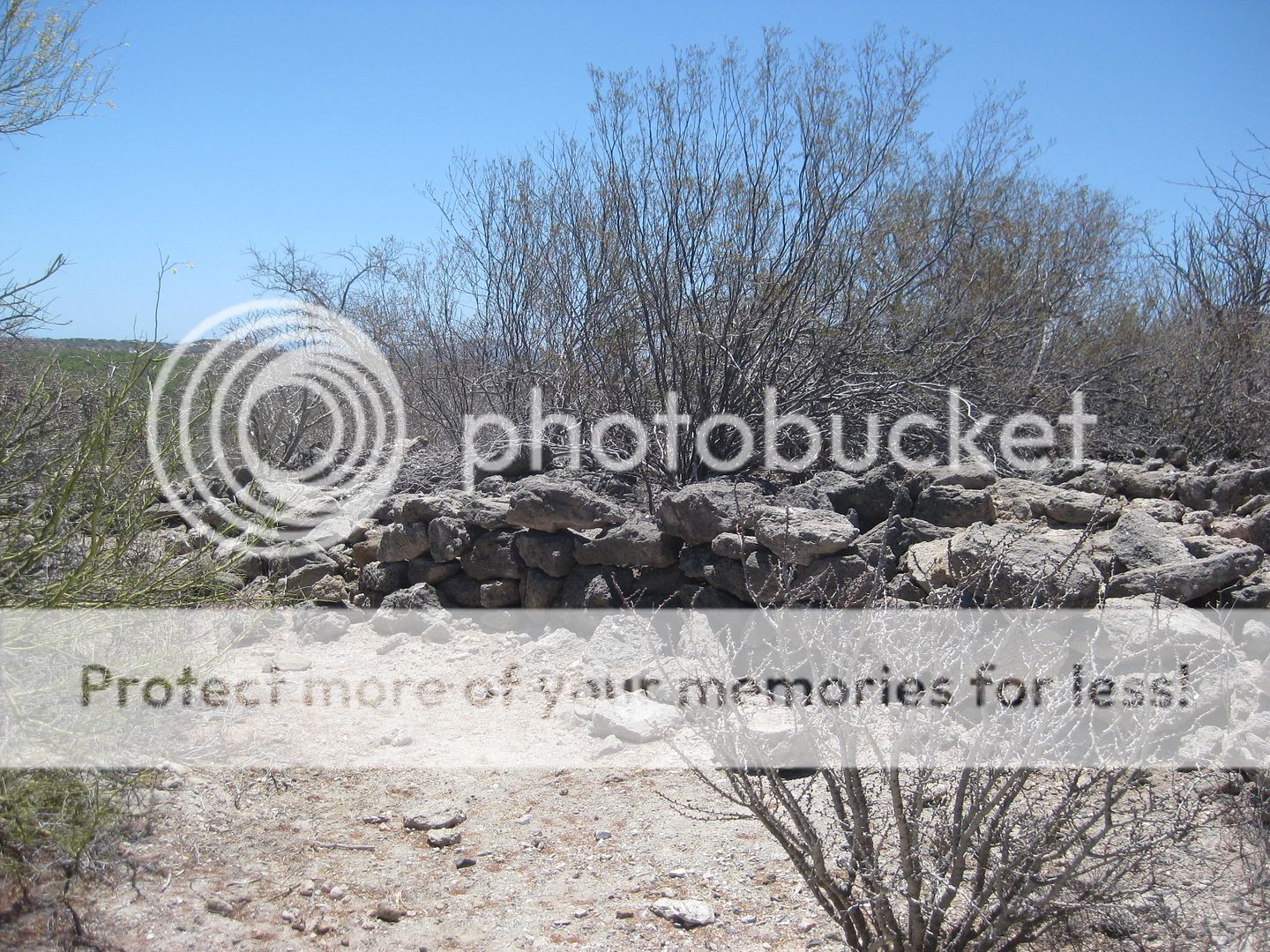
The north side of the fort. The church was located here and houses were nearby. from the north side.

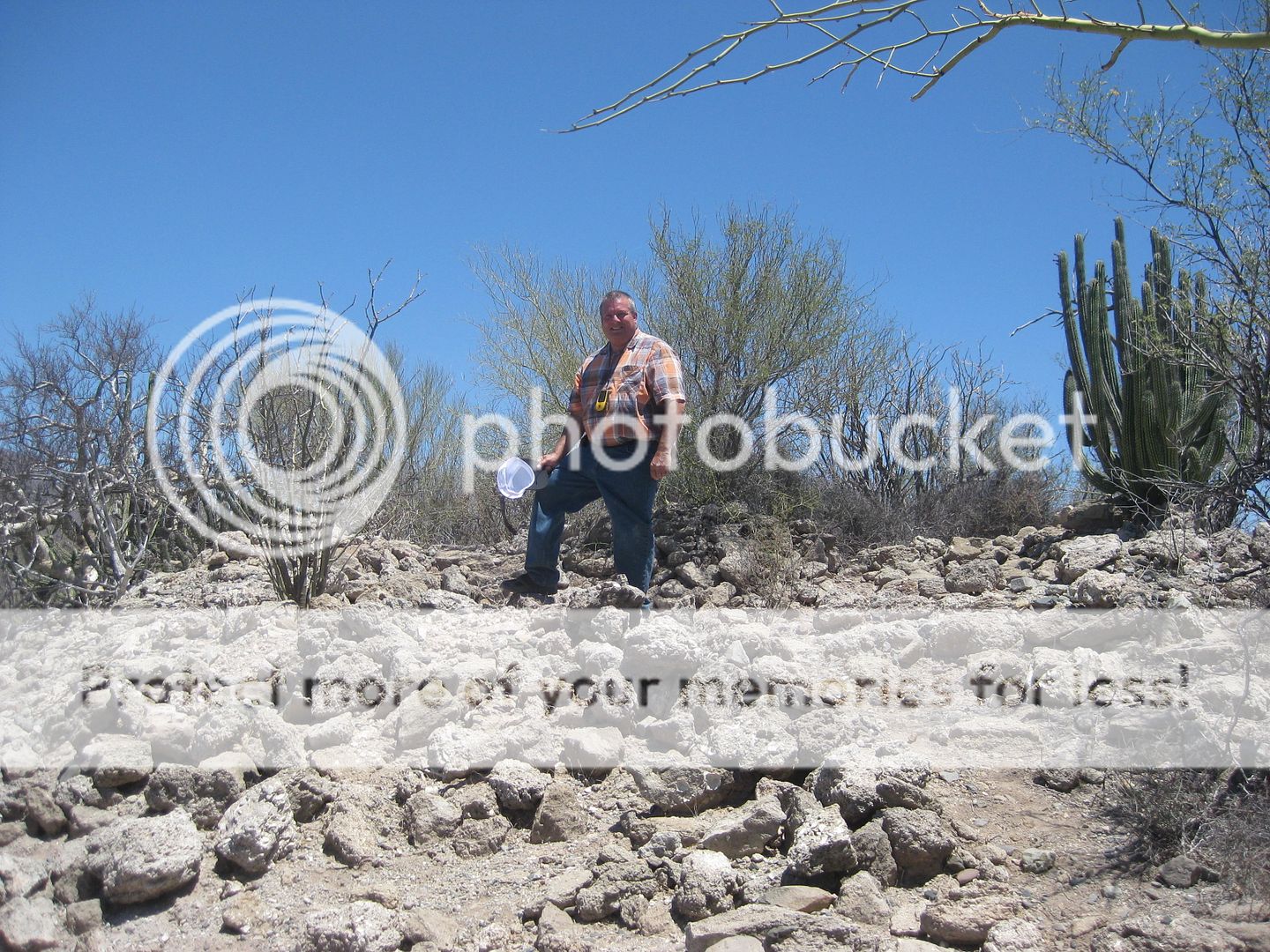
Here I am on the south side (pointy end) at the place others have photographed from the better trail up.
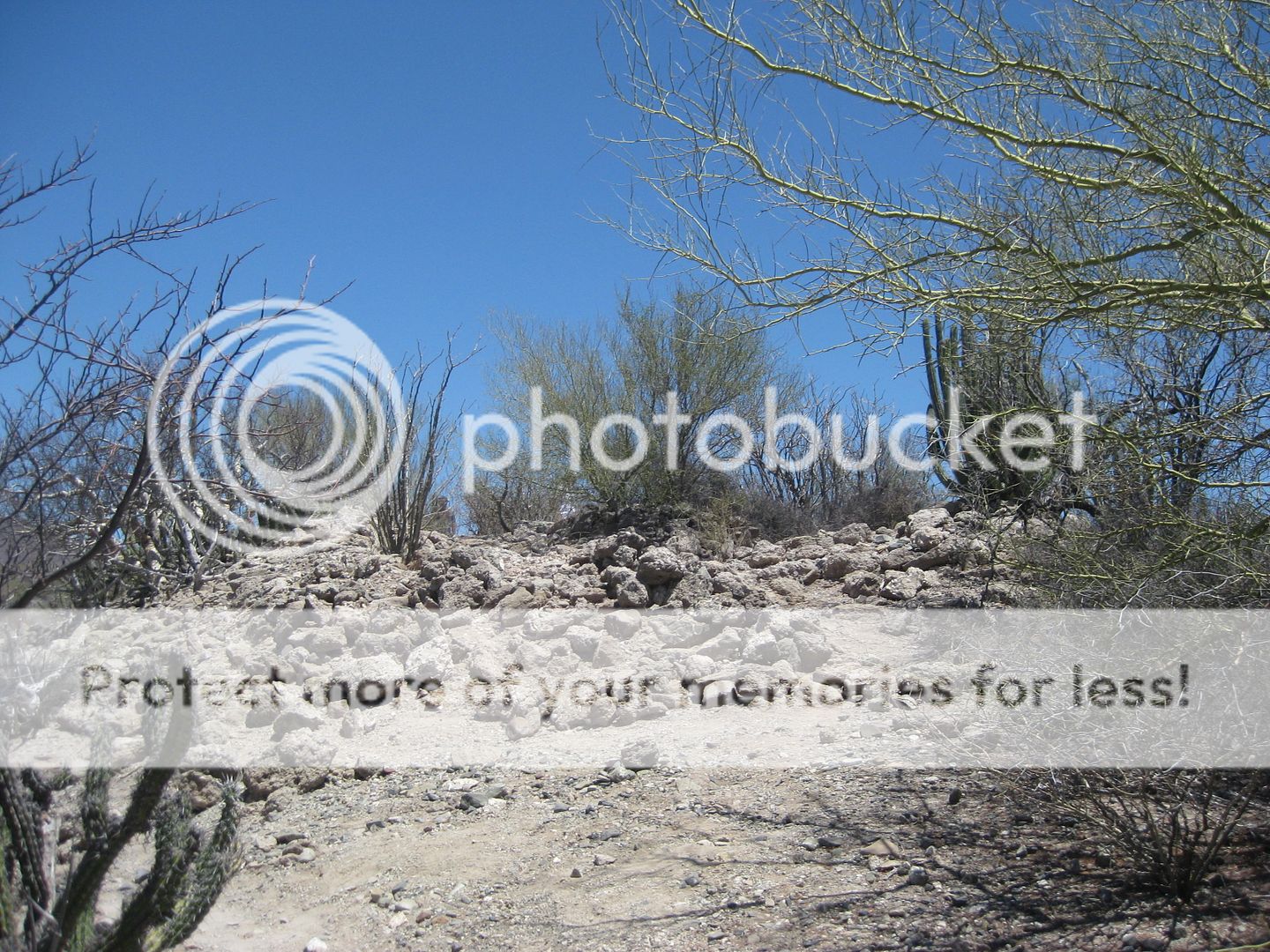

I take photos all around the fort.

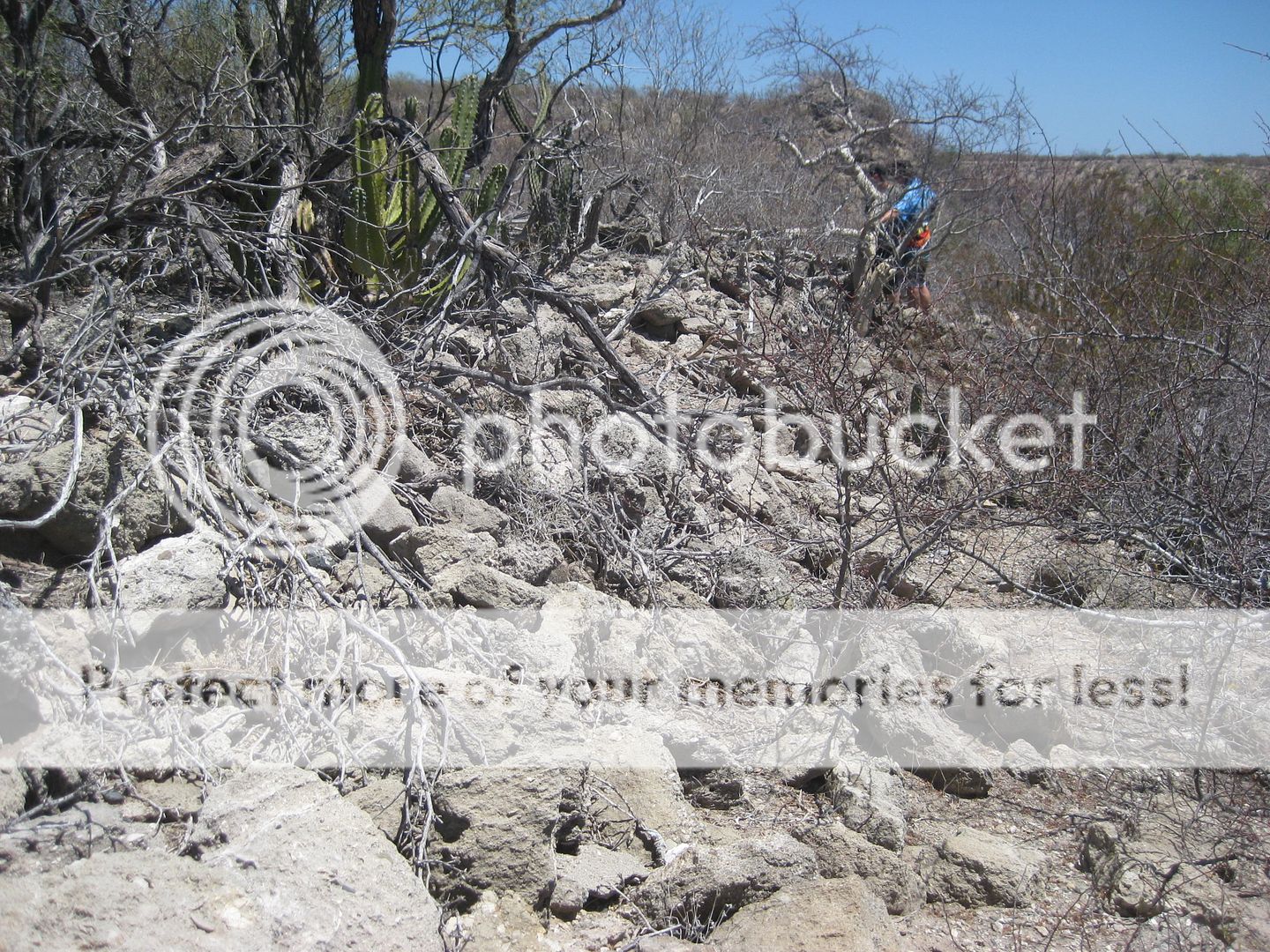
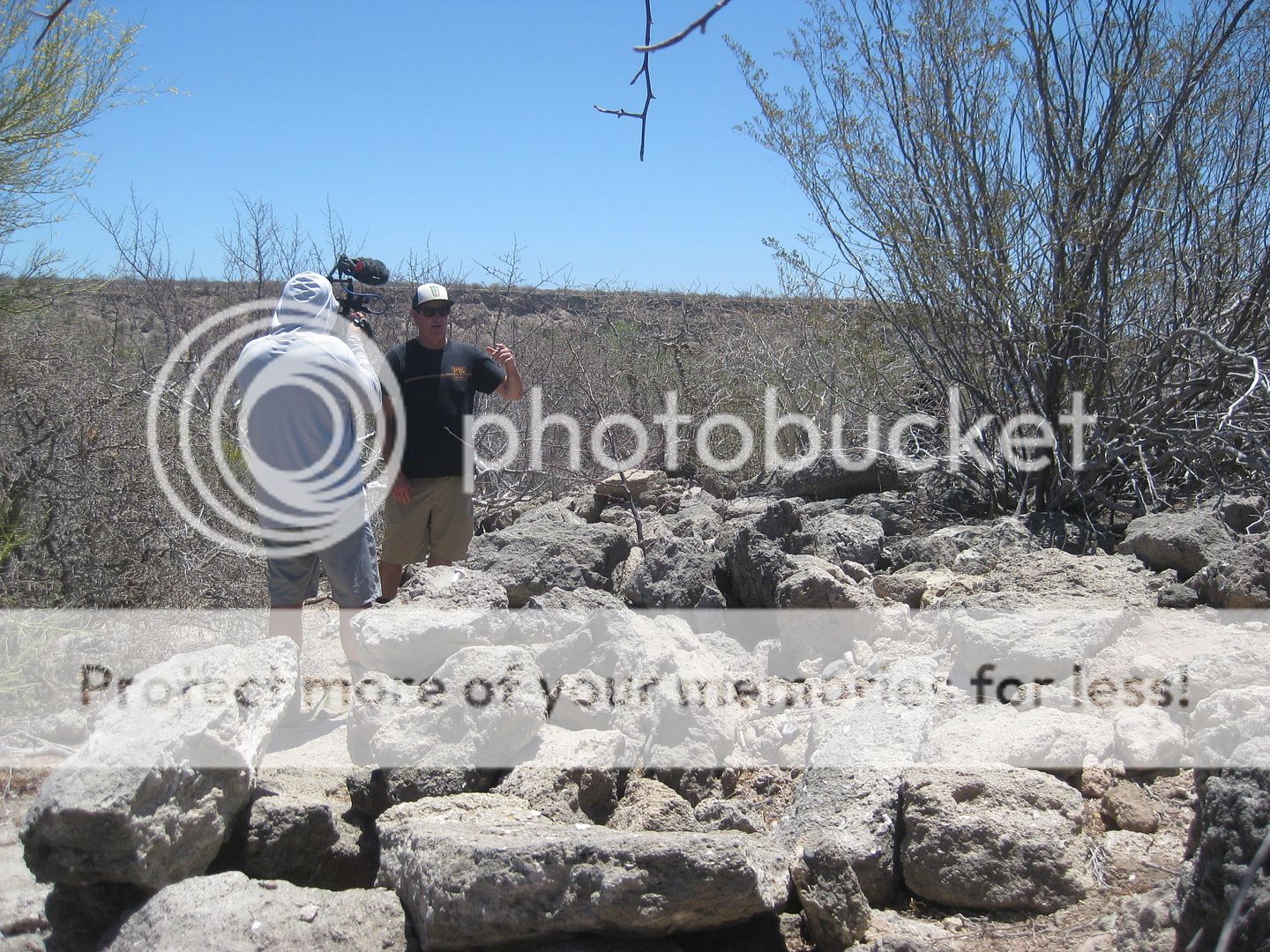


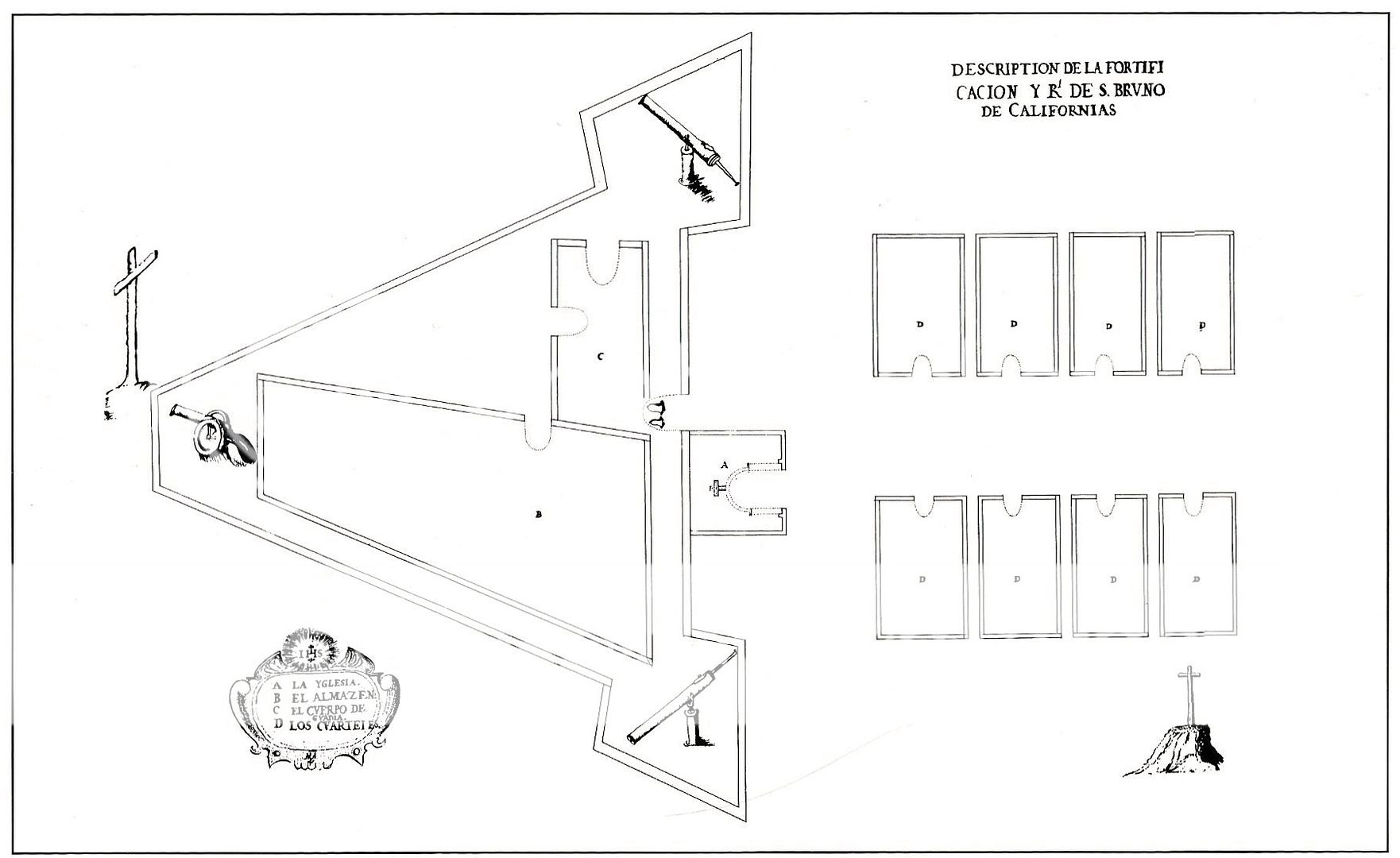
The Jesuit site plan, most likely drawn by Padre Kino in 1683. Roughly, north is to the right. The photo where I am standing is about where the cross
and cannon are, on the plan.
I wrote an article on San Bruno for Baja Bound: https://www.bajabound.com/bajaadventures/bajatravel/san_brun...
San Bruno is 15 miles north of Loreto, 4WD access from Km. 26.
Go into the big arroyo and follow it east, past sand mine pits. In 2.5 miles, the arroyo curves and note a road going across the arroyo. Turn on it to
the north. Take it 1.1 miles, across another arroyo. Go to the right about 200 yards to the base of the hill with the ruins. A trail goes up to the
site: N26°13.960', W111°23.900'
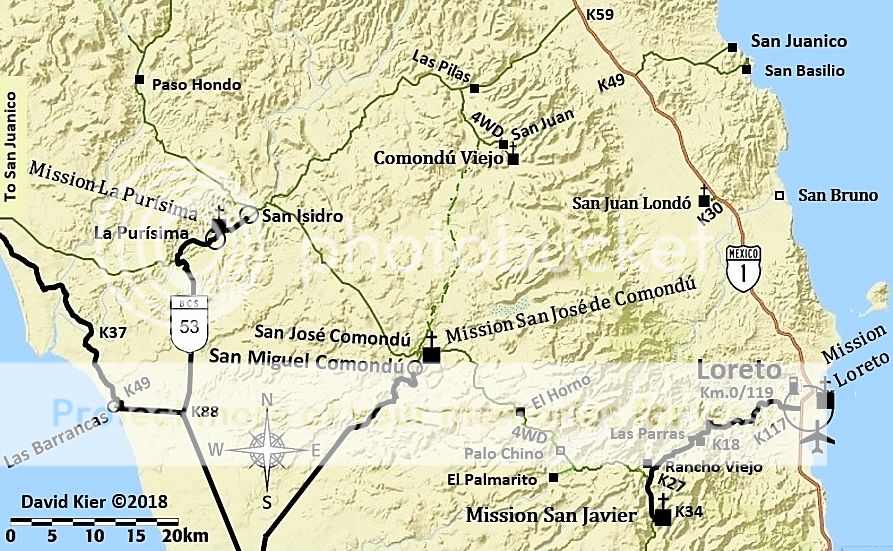
[Edited on 6-21-2019 by David K]
|
|
|
solosancarlos
Junior Nomad

Posts: 64
Registered: 11-11-2010
Member Is Offline
|
|
One has to wonder how much different (or the same)the climate was 330 some odd years ago in southern Baja?
I often imagine the ships captain telling his conquistadors to "go ashore and find some gold"...
on a summers afternoon in the Sea Of Cortez
|
|
|
David K
Honored Nomad
        
Posts: 64490
Registered: 8-30-2002
Location: San Diego County
Member Is Offline
Mood: Have Baja Fever
|
|
The letters and reports from back to that time make it sound about the same, climate-wise. Rivers (arroyos) only ran for a few days following rain. It
was a tough existence if you survived at all.
Pearls were the attraction, not gold. Silver was discovered south of La Paz in 1720 as the first metal to get mined for profit. Pearling and pirate
landings were the predominant interaction between Europeans and Native Indians long before the Jesuits began to establish missions.
|
|
|
solosancarlos
Junior Nomad

Posts: 64
Registered: 11-11-2010
Member Is Offline
|
|
Quote: Originally posted by David K  | The letters and reports from back to that time make it sound about the same, climate-wise. Rivers (arroyos) only ran for a few days following rain. It
was a tough existence if you survived at all.
Pearls were the attraction, not gold. Silver was discovered south of La Paz in 1720 as the first metal to get mined for profit. Pearling and pirate
landings were the predominant interaction between Europeans and Native Indians long before the Jesuits began to establish missions.
|
Thanks for that insight. It just must have seemed like an absolute hellish world to be in. Terrible water source strains, less than friendly natives
and the late summer storm threats as well. Are there any old reports of Hurricanes messing with the Spanish during this period?
It also never ceases to amaze the amount of time that went by between 1535 and this story of attempted settlement. That's a lang time with no success
in this region. Shows how truly harsh a land it is
I recall reading Ulloa and his ship/crew were last seen up near Cedros area but I will guess the NW'r or Nortes had something to do with that
|
|
|
David K
Honored Nomad
        
Posts: 64490
Registered: 8-30-2002
Location: San Diego County
Member Is Offline
Mood: Have Baja Fever
|
|
Oh indeed yes! Plenty of ships vanished crossing the gulf! That is why the Jesuits were so keen on finding out if California was a peninsula instead
of an island so a land route of supply could be established.
So many proved it was a not an island, but the mapmakers continued showing it surrounded by water!
Years and explorers proving California was not an island:
1539 Ulloa
1540 Alacron and Diaz
1700, 1701, 1702 Kino (3), Salvatierra (1)
1721 Ugarte
1747 Consag
[Edited on 6-21-2019 by David K]
|
|
|
4x4abc
Ultra Nomad
    
Posts: 4165
Registered: 4-24-2009
Location: La Paz, BCS
Member Is Offline
Mood: happy - always
|
|
Quote: Originally posted by solosancarlos  |
Terrible water source strains, less than friendly natives and the late summer storm threats as well. Are there any old reports of Hurricanes messing
with the Spanish during this period?
|
most mission sites experienced horrific devastation from hurricanes. David will surely provide more insight.
Baja has an amazing amount of water (if you know where to look) - however, as the padres wrote back to Spain, it is never where you need it. You
either have arable land and no water - or you have water and no arable land. Or you have arable land and water but not enough workers (Indians). In
many cases long aqueducts were built to transport water to the fields. The sites chosen by the padres for their missions have all been scouted for
years to ensure they would support a small workforce.
Livestock has different requirements. A ranch close to a water source will do - they go and find their food on the mesas. That may support a rancher
and his family, but it was not sufficient for the missions.
Harald Pietschmann
|
|
|
solosancarlos
Junior Nomad

Posts: 64
Registered: 11-11-2010
Member Is Offline
|
|
Will surmise that the "Padres" weren't able to just waltz in and declare a water source "theirs"
Thus, they were away from them a distance
Show us otherwise
|
|
|
David K
Honored Nomad
        
Posts: 64490
Registered: 8-30-2002
Location: San Diego County
Member Is Offline
Mood: Have Baja Fever
|
|
Missions were established to convert the Natives into Spanish subjects teaching them the religion, language, and living style of Spain or Spanish
Mexico, across the gulf.
So, missions were established where the Natives lived, as long as the water supply was sufficient for agriculture (crops and livestock). The Natives
didn't farm or have livestock. They were hunter/gatherers.
Often, as a mission grew, the water supply or farmland available wasn't enough, so the mission moved... and the Natives (neophytes) moved with the
mission as they were now farmers and ranchers more so than hunters and gatherers.
Loreto and Mulegé missions never moved, but San Javier and Comondú did, for example.
|
|
|
David K
Honored Nomad
        
Posts: 64490
Registered: 8-30-2002
Location: San Diego County
Member Is Offline
Mood: Have Baja Fever
|
|
Missions moving and sometimes going by the new location's name has confused many writers and was one of the goals of my book, to provide the correct
history for each mission.
Each mission has a story to tell, and a book could be written for almost every one, there is that much history.
I provide a brief history for each mission but in some cases, it is all there is and more than any other book has published.
The main focus was to provide the correct name, date, location, missionaries there, and directions for modern travelers. I also have a chapter on the
"lost missions" and explain what they really are.
|
|
|
4x4abc
Ultra Nomad
    
Posts: 4165
Registered: 4-24-2009
Location: La Paz, BCS
Member Is Offline
Mood: happy - always
|
|
Quote: Originally posted by David K  | NOTE: This was originally posted as part of my May 2019 trip report.
Some writers call San Bruno a mission, but it was more of a colony attempt to gain a foothold in California. It lasted less than two years as poor
water supply, lack of food, and scurvy all were hard to overcome. Kino and Atondo did make a crossing of the peninsula from here making them the first
to reach the Pacific by land. |
wasn't establishing missions/colonies just that - colonizing land that wasn't claimed by another country?
As we all know the Jesuits did this on their own money
so they expected a return
they found investors for each mission to push forward
seed money
I know, on paper it was for the glory of god
but I haven't seen any religious organization that has lost money doing so
Harald Pietschmann
|
|
|
David K
Honored Nomad
        
Posts: 64490
Registered: 8-30-2002
Location: San Diego County
Member Is Offline
Mood: Have Baja Fever
|
|
The Kino/ Atondo expeditions were civil/military. What Kino realized after the harsh events at La Paz was that for the Jesuits to have any success
with the Californians they would need to have authority over the military.
The Spanish government consented but told the Jesuits they would need to fund the project. Kino began seeking financial support to make the missions a
possibility and make sure the soldiers were well behaved to the Indians.
12 years later, Loreto was founded but Kino didn't get to join Salvatierra, as planned.
|
|
|
David K
Honored Nomad
        
Posts: 64490
Registered: 8-30-2002
Location: San Diego County
Member Is Offline
Mood: Have Baja Fever
|
|
Here is my San Bruno article at Baja Bound: https://www.bajabound.com/bajaadventures/bajatravel/san_brun...
|
|
|

